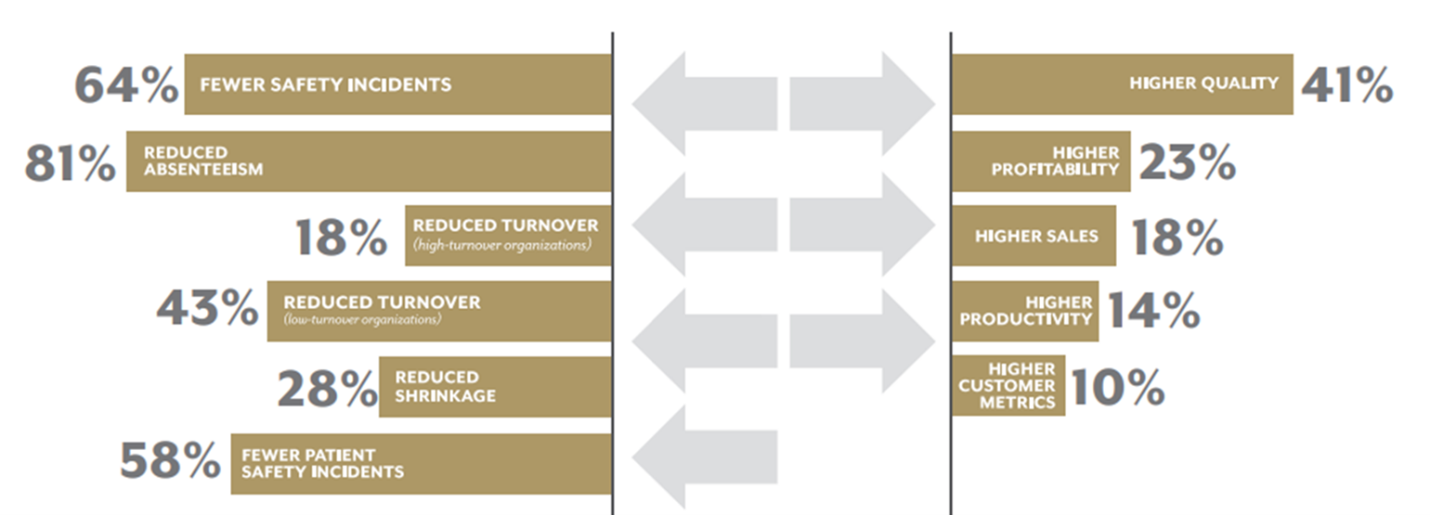Executive & Management Buy-In for Your Engagement & Recognition Strategy

In almost every executive, leadership, management, or employee survey conducted the results always show the importance of engaging and recognizing your workforce.
Since that's the case then why is it so difficult to get executive leadership to approve budget dollars for these important programs? Traditionally executives have been measured based on financial performance objectives and increasing shareholder value even though in our guts we always believed that recognition was the right thing to do, it was hard to show the financial value.
.png?width=729&name=The%20engagement%20level%20of%20employees%20who%20are%20recognized%20is%20three%20times%20higher%20than%20those%20who%20do%20not.%20(5).png)
It was always an intangible value and difficult to place an economic value or an ROI on recognition.
Times are changing and more and more executive compensation is based on both financial and nonfinancial measurements, such as culture.
Having come up through the ranks on the finance side and being a CPA and bean counter by trade I was from the camp that employees were paid every two weeks at such time we were even and since there was no tangible ROI, recognition was a nice thing to do but nothing more than an expense on the income statement.
Fortunately, my eyes were opened as I learned and grew professionally, and, most importantly, data, studies and surveys started to show a correlation between economic value as well as an ROI on recognition. It became very apparent that recognition and engagement had a definitive and noticeably big economic impact on an organization’s bottom line.
Your gut and heart told you employee recognition was the right thing to do and better yet, you could apply the positive effect it had on the company’s bottom line. It was a win-win. In my mind it doesn’t get any better than that.
Management Buy-In for Recognition Programs
To get executive buy in, you need to position your recognition and engagement strategy into a business case that shows leadership the benefits both organizationally wide and how it lines up with individual performance criteria and objectives. Again, a win-win situation.
How to Build the Business Case for Recognition & Engagement Programs
- Tie recognition into the organization's vision, mission, and values.
- Make recognition part of the organization’s strategic objectives.
- Make sure your recognition program is measurable and apply financial measures in all areas applicable.
- Use case studies, ROI tools, and other cost templates to prove your business case.
- Build scenarios showing the bottom-line effect of decreased absenteeism, increased productivity, reductions in safety accidents, increased quality, decreases in turnover rate, increased sales, increased customer loyalty and most importantly how these result in increased profitability.
Use your organizations numbers to show the actual true effect to your organizations bottom line.

It’s also important to show leadership the positive tangible (monetary) effect where possible, use tools to convert the intangible (nonmonetary) to tangible measurements and show where and how those intangibles tie into the overall vision, mission, and values of your organization.
In fact, research from Gallup reports that companies with highly engaged workforces outperform their peers by 147% in earnings per share.
.png?width=689&name=The%20engagement%20level%20of%20employees%20who%20are%20recognized%20is%20three%20times%20higher%20than%20those%20who%20do%20not.%20(6).png)
It is hard to argue or deny a business case based on positive financial and nonfinancial results for your organization by anyone in your organization.
If you build a strong business case for recognition and engagement and show that for every dollar invested in recognition and engagement results in adding three, four, five or even more dollars to the bottom line.
Every executive and leader would want to buy into your recognition and engagement program built on such a strong business case. How could they not?
Let’s start changing the narrative from getting executive buy in to getting executive investment in recognition and engagement programs.